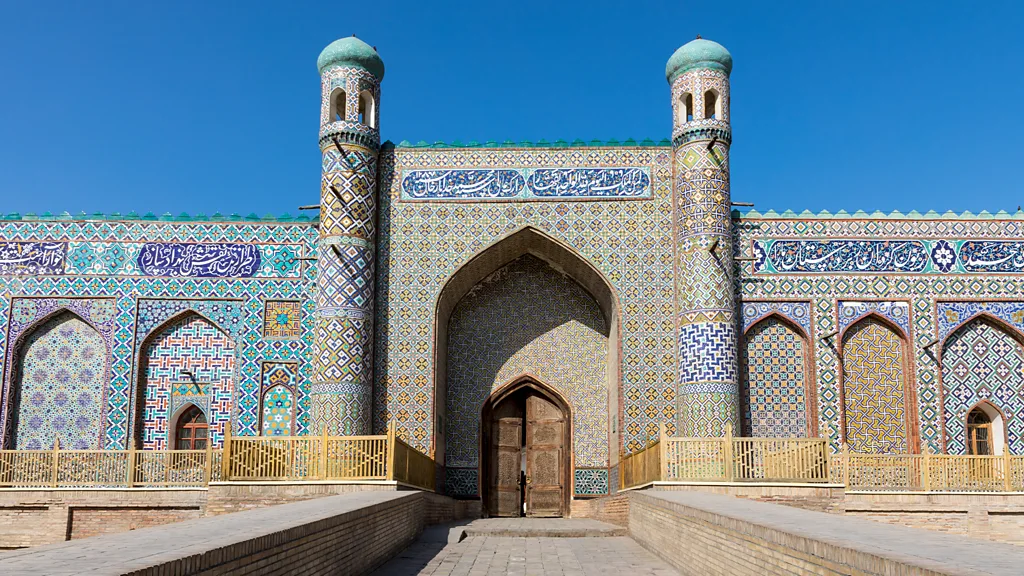
August 18, 2025 | 59 views
In recent years, Uzbekistan has embarked on an ambitious nationwide tourism boom that is transforming much of the country. But its beating heart is in a stunning and largely secluded valley.
It’s dawn in Tashkent when the hulking Soviet-era train groans into the station and shudders to a halt. I’ve taken several crowded trains across Uzbekistan by now, but this one, bound for the eastern city of Margilan – the gateway to the Fergana Valley – is devoid of foreign travellers.
Inside, I sit beside a family of three. The matriarch, Gulnora, wears a striking headscarf patterned in bold geometric motifs. I point to it and say, “Ajoyib!“, the Uzbek word for “great”. She smiles and tells me she got it from the valley we’re headed towards.
The day before, at Tashkent’s blue-domed Chorsu Bazaar – one of Central Asia’s oldest markets – I came across a mound of strawberries. Though small in size, they tasted like bursts of spring. Sticky-fingered, I asked the vendor through Google Translate, “Where are these grown?” He immediately answered, “Fergana.”
On the train, I offer the last of my strawberries to the family. Gulnora smiles again and opens her own box in response. Inside is a rainbow of fresh and dried fruit: mulberries, apricots, apples, oranges and strawberries, all coming from the valley. She then pulls out a small ceramic quarter plate and arranges a small feast for us.
Related News
Advertisements

Advertisements

Latest Stories
Advertisements











